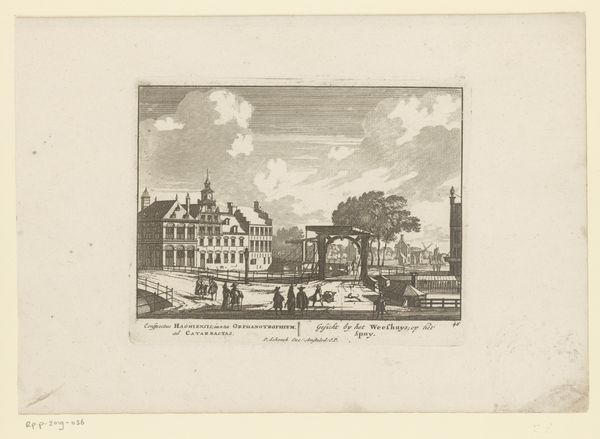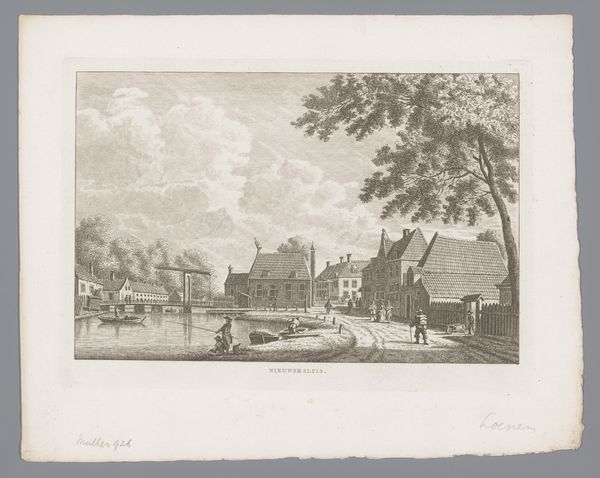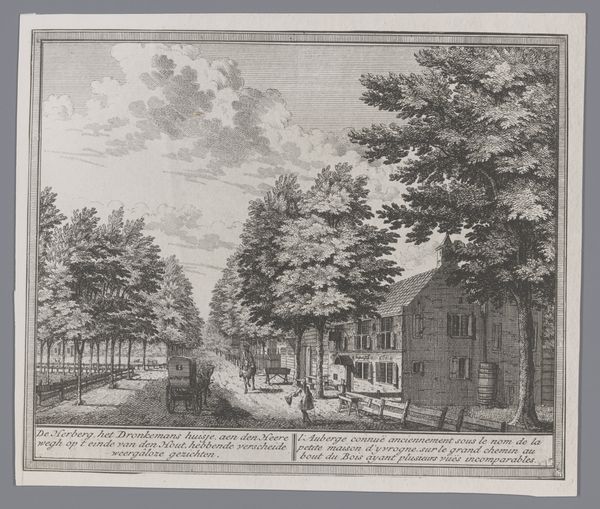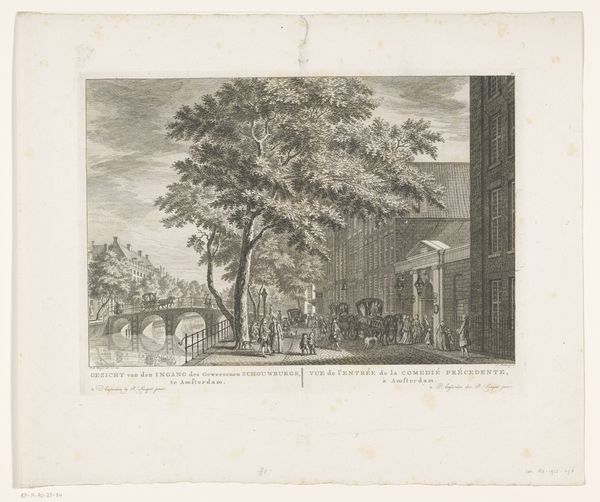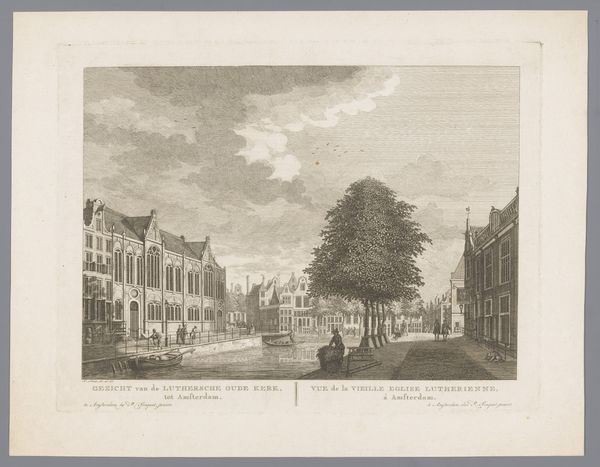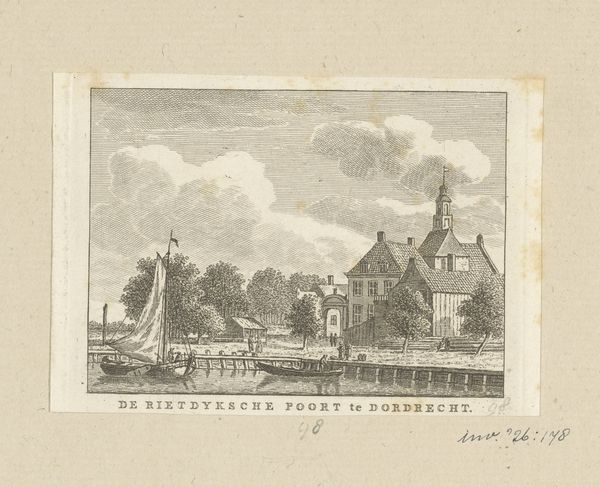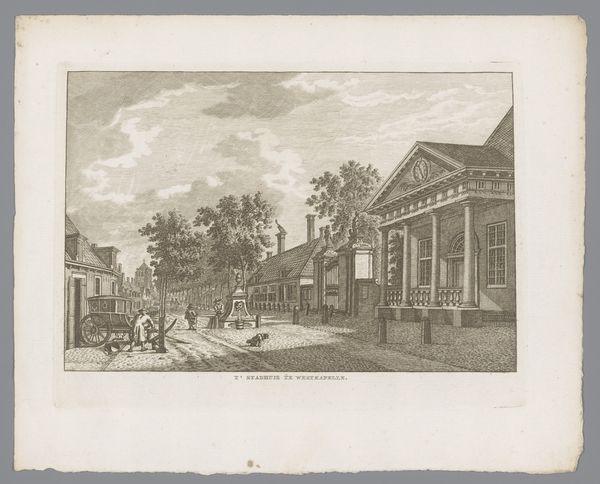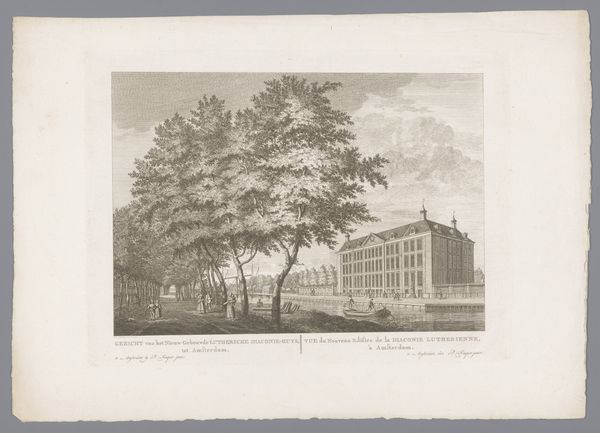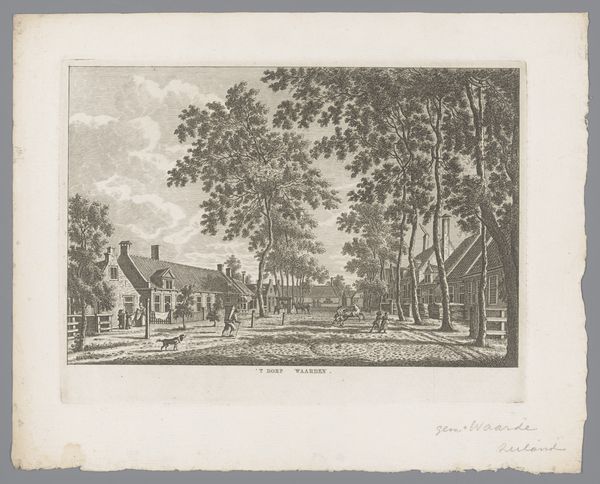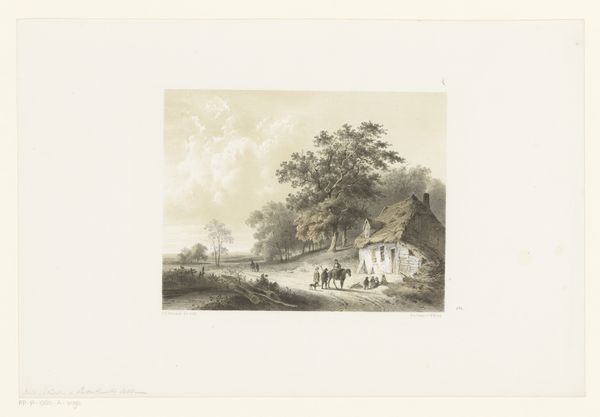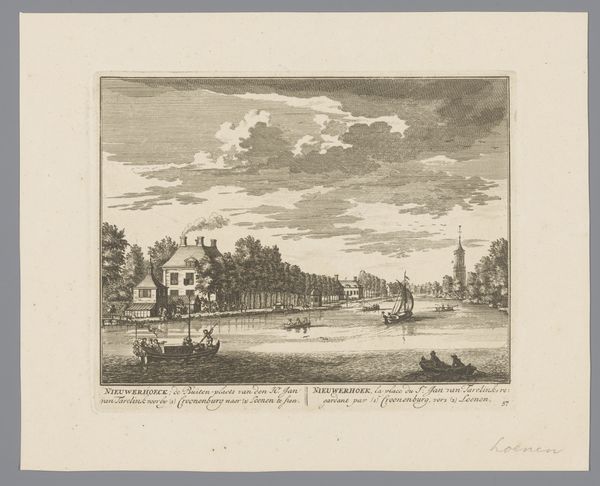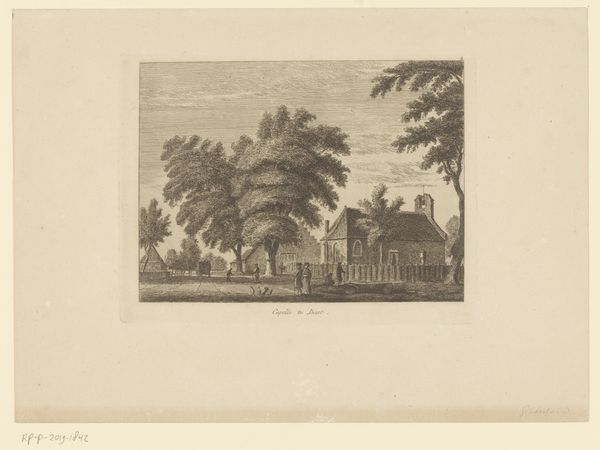
Gezicht op het Oudezijds Huiszittenhuis in Amsterdam 1778 - 1783
0:00
0:00
Dimensions: height 265 mm, width 337 mm
Copyright: Rijks Museum: Open Domain
Curator: Welcome. We’re standing before Hermanus Petrus Schouten's "View of the Oudezijds Huiszittenhuis in Amsterdam," an engraving made between 1778 and 1783, depicting a cityscape. Editor: My first impression is a muted, almost somber one, despite the activity. The monochromatic palette emphasizes the architectural structure, a sort of ordered stillness in a bustling city scene. Curator: It's quite representative of the 18th-century Dutch tradition of cityscape depictions, highlighting Amsterdam’s urban fabric. You see the Oudezijds Huiszittenhuis, an institution for housing the poor. Note its position—central yet blending almost seamlessly into the neighborhood. Editor: I'm struck by how the artist has included the vulnerable alongside everyday life. It implicitly prompts reflection on socio-economic divides. How public charity intertwines with urban planning, doesn’t it? What’s striking is how subtly political the choice of subject becomes when one thinks about how these narratives are consciously framed within public art. Curator: Precisely. Engravings like this had a public function; they were affordable and reproducible, spreading particular perspectives of the city. Consider the chosen viewpoint. The architecture isn’t glorified; it's functional and integrated. The inclusion of trees lining the canal softens what otherwise would have been a stark depiction of poverty, right? Editor: Definitely. And notice that while this might be framed as “realism”, what and how he’s representing feels carefully chosen. It makes me think of the ways social welfare institutions shape and define city spaces, subtly embedding power structures within the urban environment. It raises interesting questions around visual culture shaping public perceptions. Curator: I concur. It's an intricate layering of visual storytelling with sociopolitical contexts. Editor: It leaves you considering the function of art as a visual document and social commentary. The seemingly benign scene sparks much introspection. Curator: Indeed, an enduring and multi-layered look into Amsterdam’s past and its societal complexities.
Comments
No comments
Be the first to comment and join the conversation on the ultimate creative platform.
